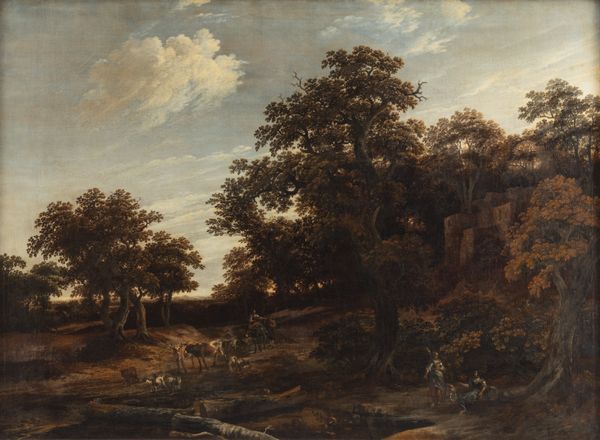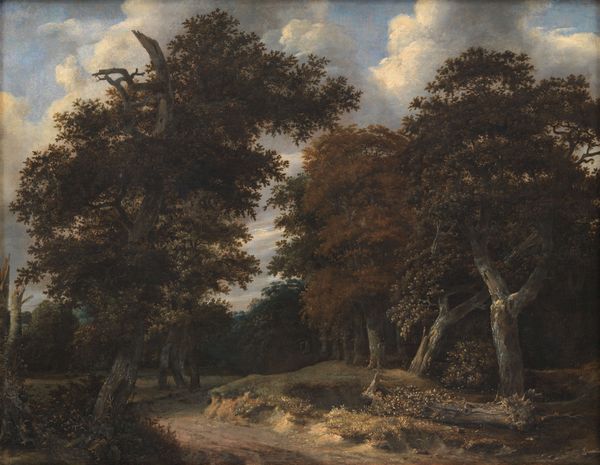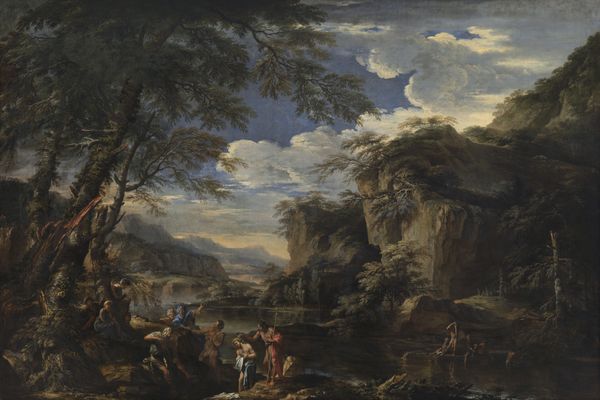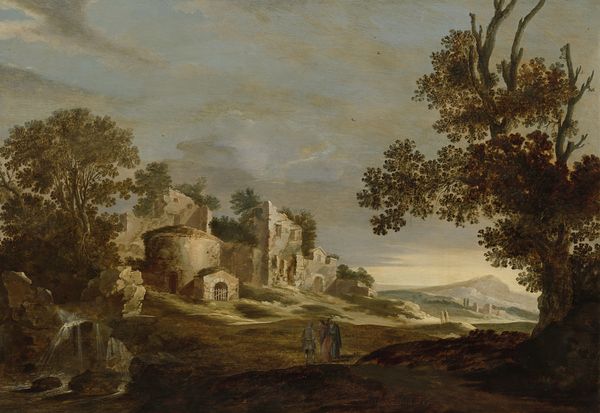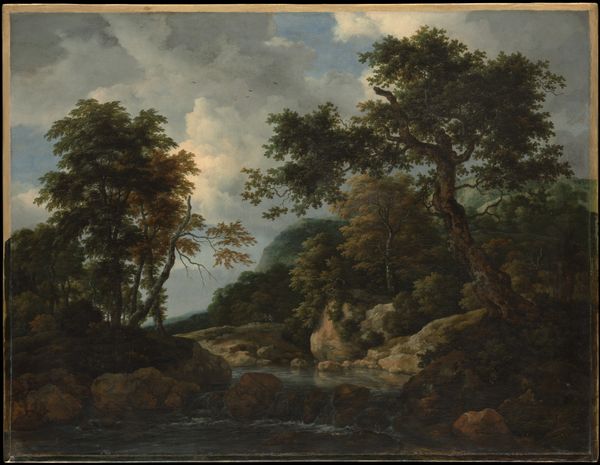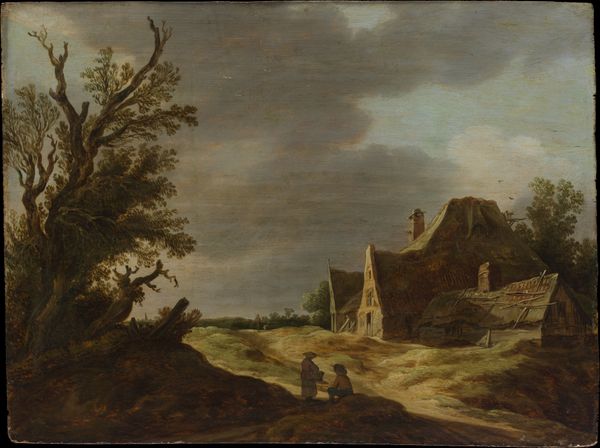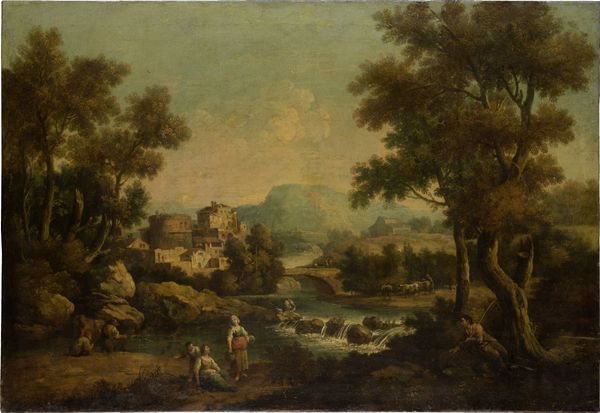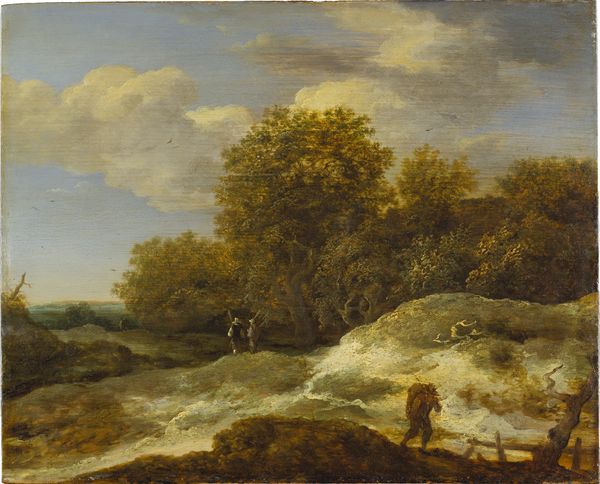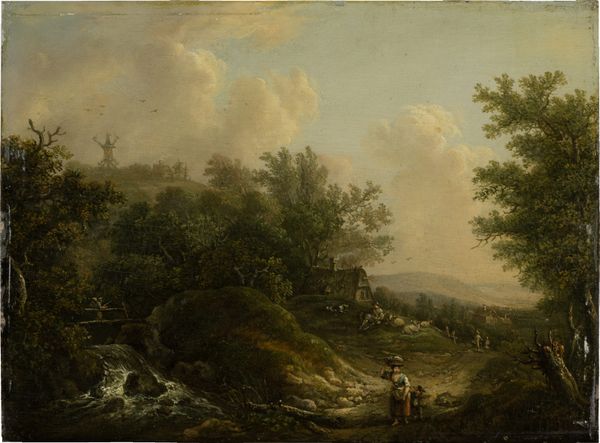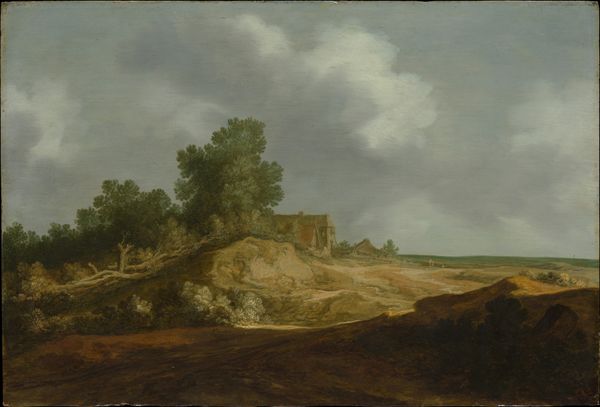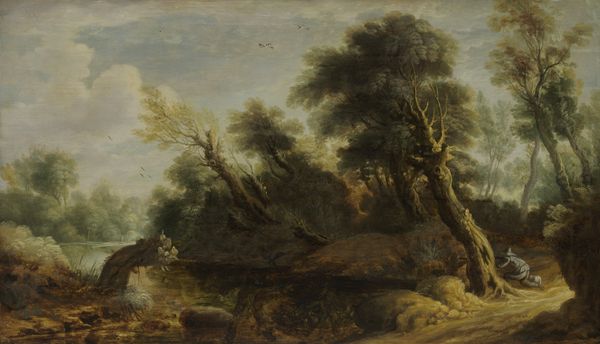
painting, oil-paint
#
dutch-golden-age
#
painting
#
oil-paint
#
landscape
#
oil painting
#
realism
Dimensions: height 108.5 cm, width 135 cm, depth 10.5 cm
Copyright: Rijks Museum: Open Domain
Curator: This is Jacob van Ruisdael's "Rocky Landscape," created sometime between 1650 and 1682. The medium, as you can see, is oil paint. Editor: My initial reaction is one of stark contrast. The house looks so weathered, while the natural setting feels...almost aggressively indifferent. There's a clear tension between civilization and the raw power of the natural world. Curator: Indeed. Ruisdael masterfully employs light and shadow to create a visual narrative. Notice the strong diagonal composition leading the eye from the dark foreground rocks towards the brighter sky and distant cliffs. Editor: That dynamic use of chiaroscuro creates an undeniable sense of depth. The way the light illuminates the craggy rocks juxtaposed against the somber hue of the small wooden structure enhances the feeling of humanity dwarfed by nature’s grandeur. Was there a burgeoning philosophical interest in the sublime happening at this time? Curator: Precisely. This piece is a perfect example of the Dutch Golden Age landscape painting capturing that growing fascination. Consider the symbolism – the rugged, almost untamed nature representing the power and unpredictability of the world beyond the cultivated Dutch lowlands, reflecting on maritime power, trade, and maybe an anxious ambivalence concerning the nation's success and ecological reach. Editor: And it brings to mind some relevant details. The dilapidated structure could represent a struggle against those natural forces and, maybe, some awareness about labor exploitation and environmental transformation. Curator: Quite possible. Though we lack explicit records connecting this specific piece to those themes, the anxieties were certainly present. I appreciate, moreover, Ruisdael's deliberate brushwork. The texture of the rocks, the foliage, even the churning water, is rendered with impressive detail. Editor: That granular, almost tactile rendering contributes greatly to the raw emotional landscape and suggests new interpretations on historical impact. It makes us consider the lived experience within it more closely. Curator: Absolutely. A successful example of the period’s artistic dialogue between aesthetic representation and complex socio-cultural contexts. Editor: A fruitful way to start appreciating Dutch society, artistic achievement, and ecological cost.
Comments
No comments
Be the first to comment and join the conversation on the ultimate creative platform.
